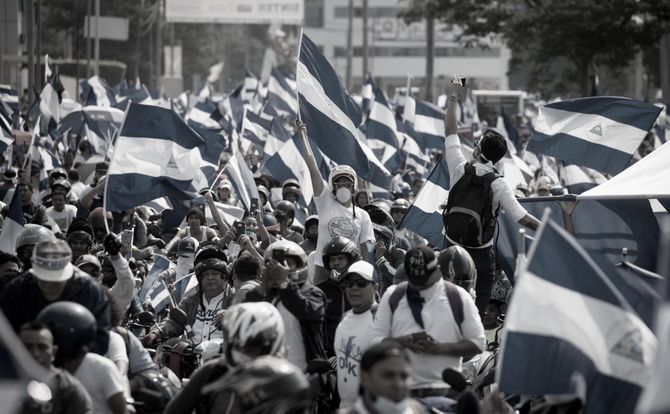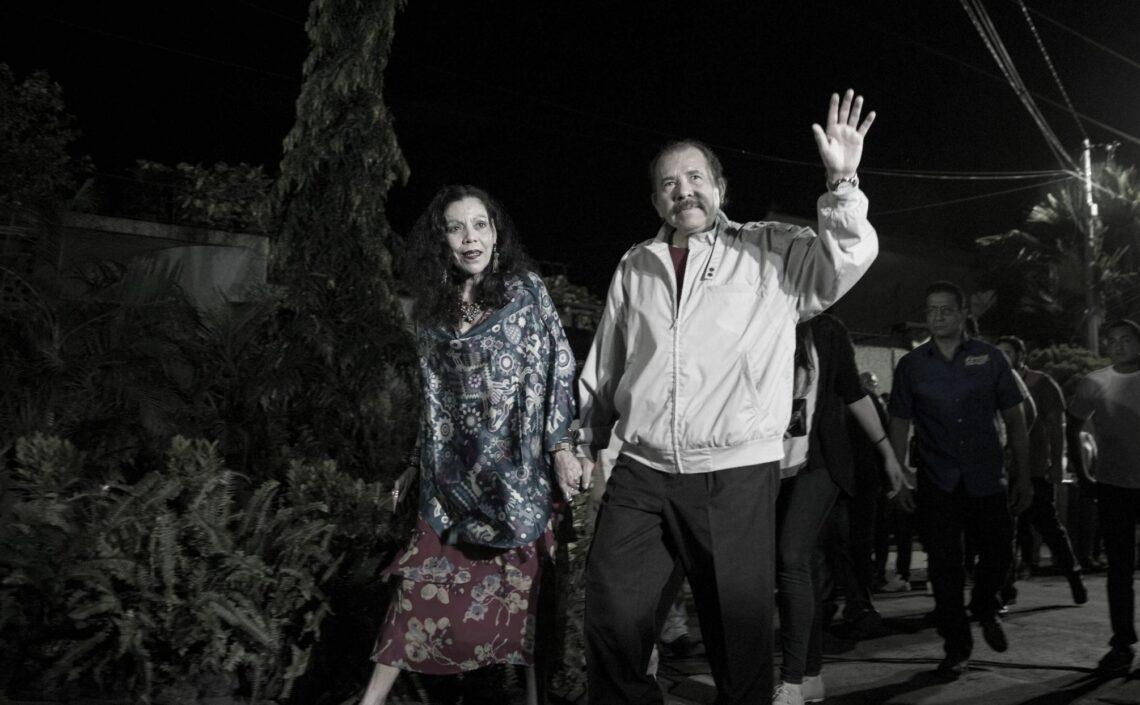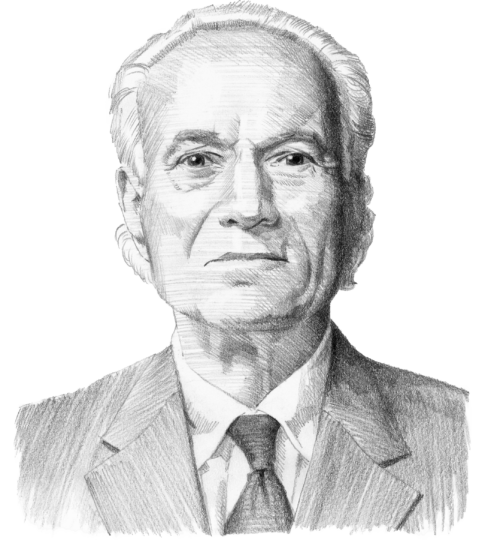In Nicaragua, the opposition must unite to oust Ortega
Since April, Nicaraguans have been protesting in the streets for an end to the regime of President Daniel Ortega. One of the original Sandinista leaders who brought down the Somoza family dictatorship 40 years ago, Mr. Ortega himself now faces accusations of authoritarianism.

In a nutshell
- Daniel Ortega runs a kleptocratic, authoritarian regime
- The loss of aid from Venezuela has increased poverty and eroded his support
- He could hang on to power for months unless the opposition unites
Nobel Prize-winning author Mario Vargas Llosa recently said in an interview with The Economist that “there is no good dictatorship.” Though he was referring to Venezuela, Cuba and the Pinochet regime in Chile from 1973-1990, the phrase captures the essence of the dilemma confronting Nicaraguan President Daniel Ortega as he struggles to repress a student-led uprising that threatens to bring down his government.
Huge street demonstrations have continued for more than six weeks, with periodic violent repression by the police and armed groups, known as turbas, of Sandinista Youth. More than 130 people have been killed and more than 1,000 seriously injured in the violence. The demonstrations are mostly led by young people born after the famous Sandinista revolution that rid the country of the Somoza family, who ruled for more than 30 years. These young people have grown up in democracy and believe the government should respect their rights.
The private sector, which has been one of President Ortega’s key allies during his long rule, has expressed sympathy for the protesters, calling for the government to end its brutal repression and demanding that new elections be held with outside supervision and a new electoral commission.
Growing opposition
The most telling element of the violent confrontation between the students and their allies, on the one hand, and the turbas and police, on the other – aside from the remarkable resilience of the former – is the shout of protest, “Ortega, Somoza son la misma cosa!” (“Ortega and Somoza are the same thing!”) This slogan demonstrates the strength and breadth of the growing opposition to President Ortega. The protesters in the streets of every major city in Nicaragua are using the words and the symbols of the revolutionary Sandinista Front that brought down the Somoza dictatorship in 1979. The Nicaraguan army has also declared that it would not send troops into the streets to confront unarmed protesters and its leadership has been carefully silent during the protests.
President Ortega has made himself ostentatiously rich in Central America’s poorest country by far.
Moreover, the protesters are using these symbols against President Ortega, one of the original Sandinista rebel leaders. He was elected president in 1984 but lost his bid for reelection in 1990. Since his return to power in 2007, by a bare plurality (38 percent), he has been working to control all elements of political power in Nicaragua. He packed the Supreme Court so that it pushed aside the constitutional prohibition against reelection. Now he has cleared the way for his wife, Rosario Murillo, the vice president, to succeed him.
At the same time, he has made himself and his family ostentatiously rich in Central America’s poorest country by far. Nicaragua’s gross domestic product (GDP) is a meager $13 billion, with a per capita GDP of about $1,900. Over the past five years, there has been a drastic decline in government funds due to the collapse of Venezuelan aid, which paid for most of the Ortega regime’s social programs. The growing inequality has played a big role in stoking the malaise among students.
Last straw
The outbreak of student protests at the end of April was precipitated by a decree altering the social security system by increasing employer contributions and the social security payroll tax, while decreasing pensioner payouts. While the changes would have hurt the poorest workers in the country the most, the nature of the protests suggests that the decree was the last straw and not the main driver. In fact, within days of the first demonstrations in April, the government caved in on this issue and agreed to withdraw the measures.
Over the past decade, President Ortega has slowly been turning Nicaragua into a family-run kleptocracy. He has held on to power through a crony capitalist alliance with the private sector and with help from Venezuela in the form of very cheap oil, which paid for his social programs. Those programs, in turn, consolidated his political base. With the fall of the price of oil in 2015 and the resulting collapse of Venezuela, that aid slowed to a trickle, pitching the social security system into deficit and undermining other social programs.

The economy had been growing at a vigorous 5 percent per year until the Venezuelan aid stopped. During that time, not only did the government win supporters through its distributions, it also lifted a significant number of people out of poverty. Since the end of Venezuelan aid, poverty has increased and inequality has worsened.
Geopolitical challenge
Nicaragua represents a significant geopolitical challenge for its neighbors and for the United States. Its location between two oceans has stirred interest from China and Russia. Chinese investors have proposed building a canal across the country to compete with the newly expanded Panama Canal. This waterway, if built, would be a significant point of influence for Chinese business throughout the hemisphere. The Russians have been very active in providing military training and selling surplus equipment, including tanks, to the government. While former Venezuelan President Hugo Chavez was alive and the Bolivarian Alliance (ALBA) was active, President Ortega was a vocal and enthusiastic participant in the organization.
On the other hand, Nicaragua is a member of the Central American free trade agreement with the U.S. (CAFTA-DR). It is also a participant in regional military cooperation managed by the United States Southern Command. Thus far, Nicaragua has managed to avoid becoming part of the channel through which illegal drugs are transported from South America to the U.S. Nor is it a significant source of migration to the U.S., although it will suffer as much as the other countries in the region if the U.S. continues to cut aid as part of its effort to curtail illegal immigration. It has low levels of crime and has become a popular destination for tourists.
A new generation is demanding President Ortega make some of the same reforms he demanded 40 years ago.
Now, a new generation has come along to demand President Ortega make some of the same reforms he and his mates demanded of Somoza 40 years ago. To end the Ortega family’s rule without bloodshed, the opposition must cohere and absorb the new generation of reformers seeking democracy and the rule of law. There are also significant elements of the old Sandinista party who were defenestrated by President Ortega. They, together with remnants of the Chamorro party representing the conservatives, should be willing to help the students in their efforts.
The street action and support networks that the demonstrators have organized represent new forms of political activity for the next generation. This energy must be channeled. In a show of weakness, President Ortega invited the Inter-American Commission on Human Rights and the Organization of American States (OAS) to come to Nicaragua to investigate the violence. The Commission has issued a preliminary report condemning the government, while Amnesty International has issued its own report accusing the government of unnecessary violence.
As the standoff continues, the economic costs to Nicaragua and all of Central America are rising. At this writing, more than 6,000 trucks from Panama are stuck at the border with Nicaragua. Trade among countries in the subregion is at a virtual standstill. The total cost of the paralysis in Nicaragua is quickly rising to nearly $1 billion. That has prompted requests from private sector groups in Costa Rica and Honduras for regional intervention in the Nicaraguan crisis. Leaders of the Catholic Church have called upon President Ortega to resign and to stop his thugs from shedding more blood.
Until the political opposition unites or the OAS intervenes to mediate among the parties, President Ortega can hold on, perhaps even for months – unless there is significantly more bloodshed. At that point, he may have no better option than to take his family and his ill-gotten millions and, as the folk song goes, “run [to] Venezuela.”






